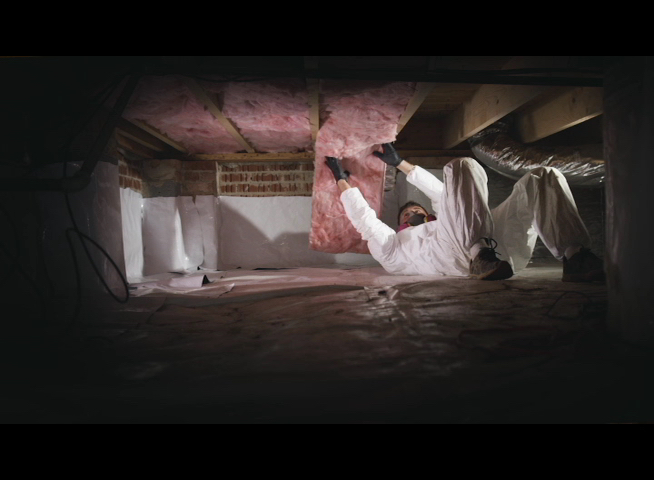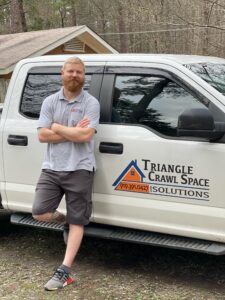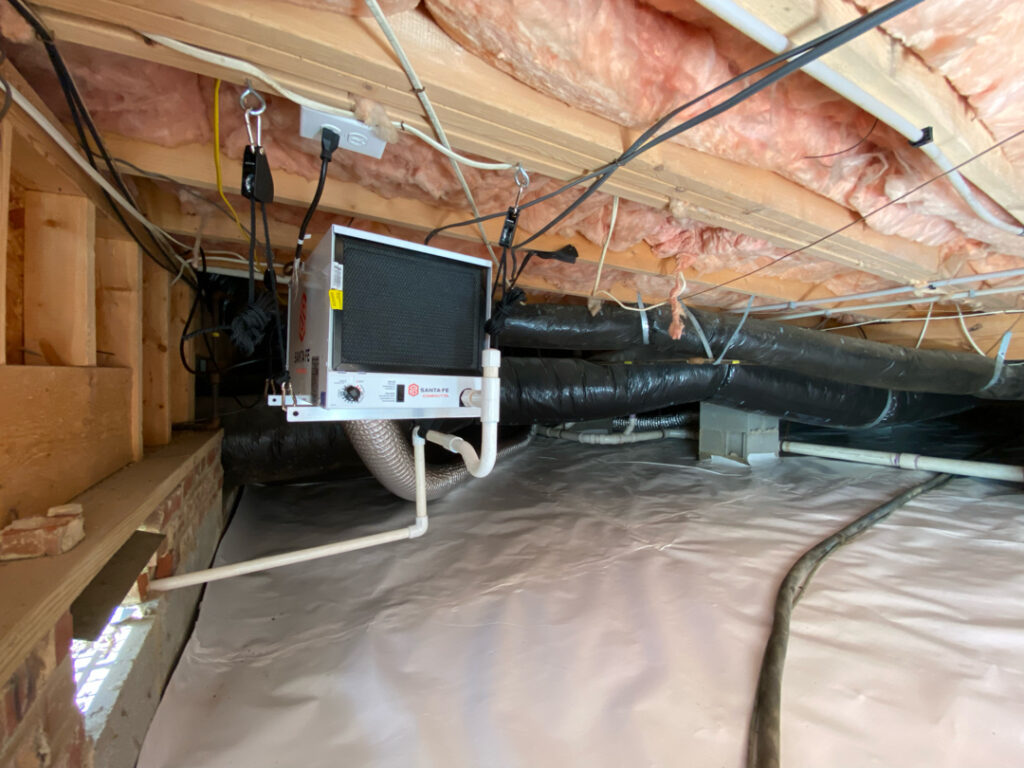Click the link below to hear the full conversation between 97.9 The Hill’s Aaron Keck and Stephan Hearn, owner of Triangle Crawl Space Solutions, about the different options available for improving crawl space conditions in the average home. Improvements made in the crawl space serve to protect the investment made in a home, and go a long way toward providing peace of mind.

A majority of homes in North Carolina are built with a vented crawl space. Unfortunately, the vented crawl space concept just isn’t efficient for the reality of the North Carolina climate and weather. The idea of encapsulating our crawl spaces as a way to improve energy efficiency, solve air quality issues and protect our homes from moisture has really taken off lately.
Encapsulation can be very effective but it is also costly. Many homeowners are overwhelmed at the scale or cost of a full encapsulation but there are different options available. Here are some basic components of improvements that can be made to a crawl space and how they impact the moisture under your home:
 Vapor Barriers: The vapor barrier or plastic sheeting you see in most homes is the first line of defense against ground moisture. Think of this as the “base layer” in protecting your home as it blocks ground moisture. Replacing or installing a good quality vapor barrier is a great starting point.
Vapor Barriers: The vapor barrier or plastic sheeting you see in most homes is the first line of defense against ground moisture. Think of this as the “base layer” in protecting your home as it blocks ground moisture. Replacing or installing a good quality vapor barrier is a great starting point.
Sealed Vapor Barriers: This is what many people associate with encapsulation; a sealed vapor barrier extends up the foundation walls and is attached to the wall. Footing piers are wrapped as well. This provides additional protection, especially if there are signs of moisture coming through the foundation itself. White chalky marks (called efflorescence) and visible drip lines on the interior of the foundation may be a sign that moisture is entering.
Insulation: Current building codes require a minimum of R19 insulation for all floors many existing homes may have R11 or simply no insulation between the floor joists at all. If there is insulation, it may have started to droop or fall over the years. Hanging insulation can wick or pull ground moisture up to the subfloor and cause damage. Even minimal repairs or tidying can help. If existing insulation is in good shape we recommend leaving it even when doing a full encapsulation.
Dehumidifier/Sealed Crawl Space: Exterior vents and other openings are closed and sealed. A specialty built dehumidifier (specific to crawl space temperature & conditions) is installed and the dehumidifier automatically turns on to mechanically remove moisture from the air as needed and circulate dry air throughout the space. This will require a dedicated electrical outlet under the home and may require combustion intake venting for any gas appliances before sealing the vents.
HVAC/Sealed Crawl Space: Some companies will tie into the HVAC system of your home rather than using a dehumidifier, basically making your crawl space an area that is heated or cooled by your HVAC system. We prefer dehumidifiers because they are a dedicated system for this space and actually remove moisture from the air rather than simply pushing dry air from the home into the crawl space. Dehumidifier systems less likely to impact overall heating/cooling cost or and HVAC system capability. Both ways can work; we just find dehumidifiers a better solution for most homes. HVAC systems still require venting for any gas appliances under the home.
Mold Removal or Remediation: Molds and other organic growth require moisture to grow so removing the moisture is effectively stopping and preventing future growth. While many of us are aware of potential mold problems for human health, mold can also begin to dry rot the foundation and joists of your home. For minor mold, it may be as simple as eliminating the source of any moisture so it can’t continue to grow but larger mold problems can require removal or remediation especially if there are health or structural decay issues involved. Removal services for mold may be more cost effective than full remediation. Remember that if you don’t address excess moisture in the space mold may return and regrow.
Sump Pumps: These address issues of sudden or frequent water flow under the home. It’s not uncommon in homes to have flooding or standing water after a heavy rain or hurricane event. Evidence of flooding or standing water commonly appears as efflorescence or white chalky marks on interior foundation walls. A sump pump sits at the lowest point under your home and acts to remove any accumulated water. The pump automatically turns on when water reaches the basin and pumps the water outside of the home. Sump pumps may require interior drainage to help move water to the low point of the crawl space.
Encapsulated Wall: As the name implies this is done for a true “encapsulation” of the crawl space. Insulated foamboard sheets are fixed to the wall to provide insulation of the space. This is commonly an R-value of 10, depending on the materials used. A gap is left at the top to allow for any future termite inspection and other needs. Traditional encapsulation removes flooring insulation because the foamboard is now enclosing the foundation walls in an insulated space. We find that some homeowners decide to keep the flooring insulation if it is in good condition for additional insulation benefits as well as soundproofing.
Gather Information and Options: It all starts with a little research to see what your crawl space conditions are and what might be the best solution. If you’re concerned about your crawl space or thinking of encapsulation, we can help. Some homes require more extensive fixes than others but it all starts with looking at the conditions specific to your home. Explore options; even basic improvements can have a huge impact so sometimes you can start simple and work from there.

We know that not everyone is willing or able to go crawling around under the house so we are happy to come take a look and share our opinion with you! Just give us a call for a free assessment.
Triangle Crawl Space Solutions is a locally owned company out of Hillsborough, NC. We are dedicated to improving crawl spaces by controlling moisture issues. Our main services include: vapor barriers, sump pumps, dehumidifiers, mold removal and floor insulation repairs in order to help customers protect and preserve their homes. We offer free assessments to help evaluate any issues your crawl space may be facing. Contact the office at 919-391-0427 or request an assessment via our website.


